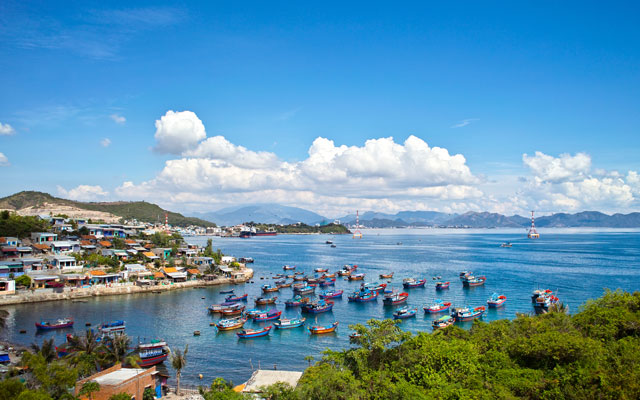Despite the many hotels coming onstream, the hotel market in Vietnam is far from saturated, with the luxury segment growing and hotel supply spreading out to emerging destinations.
Vietnam’s luxury hotel sector looks set to explode in the next few years – and there is plenty of room for more big players, say experts.
While the country’s urban centres have welcomed new additions to the luxury market, it is the coastal areas and rising destinations that are seeing the fastest growth, according to Nguyen Thuc, manager of CBRE Vietnam’s research and consulting team.

He cites the island of Phu Quoc and coastal areas of Danang and Nha Trang as examples where there have been “aggressive expansion plans from big name international brands”.
AccorHotels has unveiled a string of planned properties and Marriott is following suit. A Radisson Blu hotel is opening in Cam Ranh this month, followed by another on Phu Quoc at Vinpearl Phu Quoc Casino Complex, which was also slated to start welcoming guests this month.
Hilton has also signed several agreements with Hanoi-based developer VRG Group to open two properties in Ho Chi Minh City. And Mövenpick Hotels & Resorts has unveiled plans to open an additional five resorts covering the coastline before 2020, adding to its current resorts in Hanoi and Cam Ranh.
The remote northern region of Sapa is also undergoing dramatic development, with an MGallery hotel, among many others, slated to open in 4Q2018.
Nguyen Duc Quynh, deputy director general of Furama Resort Da Nang, said despite the imminent explosion of luxury hotels and resorts in the coming years, the market is far from being saturated.”
Said Quynh: “Hotel occupancy in Ho Chi Minh City, Hanoi, Danang and other provinces, especially coastal cities, is still high – between 65 and 85 per cent. Therefore, the development does not bring danger (of over-saturation), instead it gives customers more choices.”
CBRE’s Thuc added that the development of the luxury segment brings with it a swathe of benefits, including giving makeovers for destinations.
Nha Trang is an example, he said, where there is an abundance of three-star hotels catering to budget travellers and large tour groups. The coastal spot has become popular with Chinese and Russian tourists.
“The development of luxury products brings additional resources to the province, as well as the country, and helps to change the image,” he said. “You may have fewer guests, but you get higher margins.”
Mark Willis, president of Mövenpick Hotels & Resorts Asia, said there remains “plenty of room for expansion in this segment”, with source markets for upscale and luxury travel to Asia expanding constantly and China’s FIT sector also predicted to increase.
He added it is not just the international market driving the luxury sector; domestic travel is also pushing it forward.
“Vietnamese living standards are rising fast and consumers are increasingly willing to pay more for top-quality facilities and services,” said Willis.




















